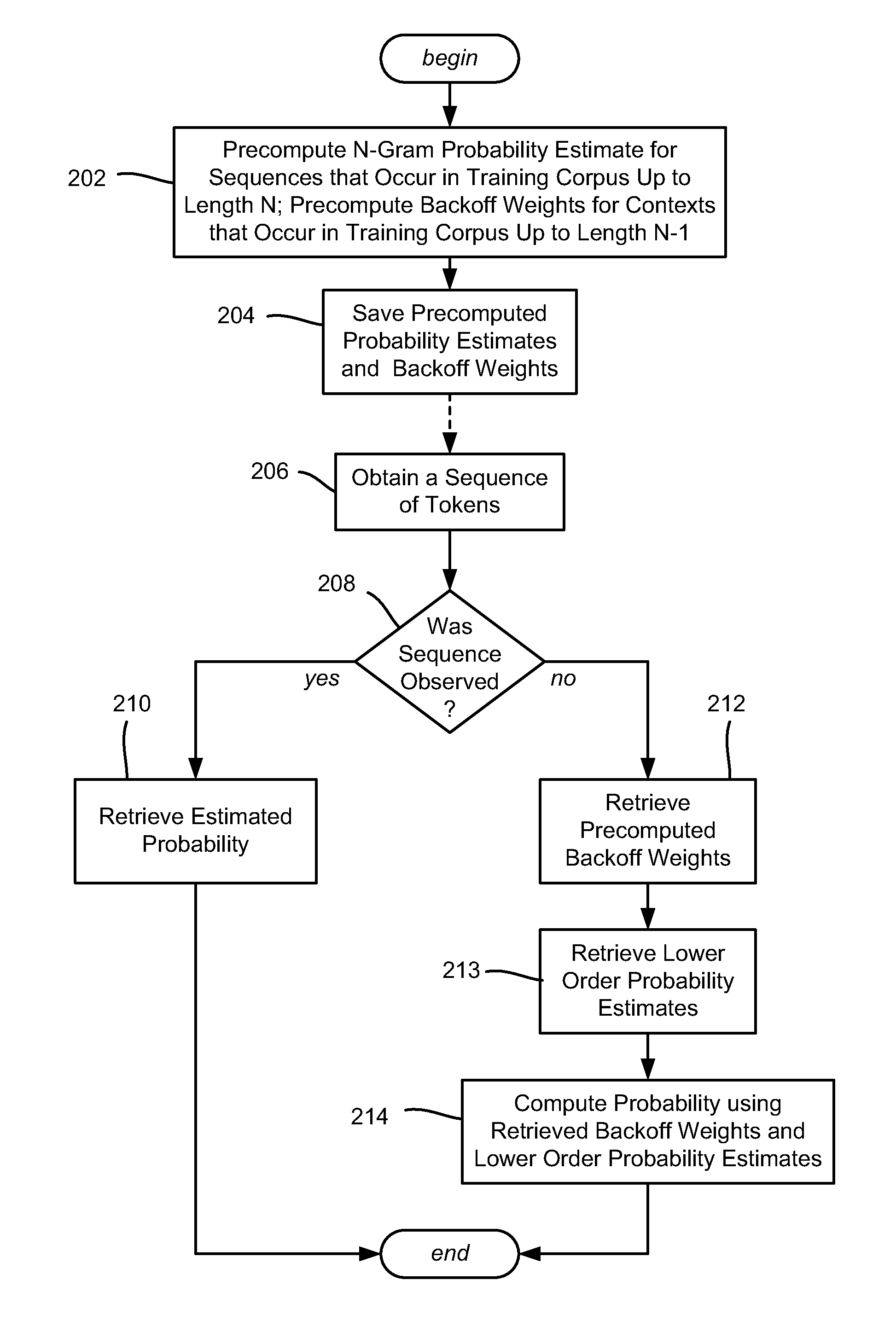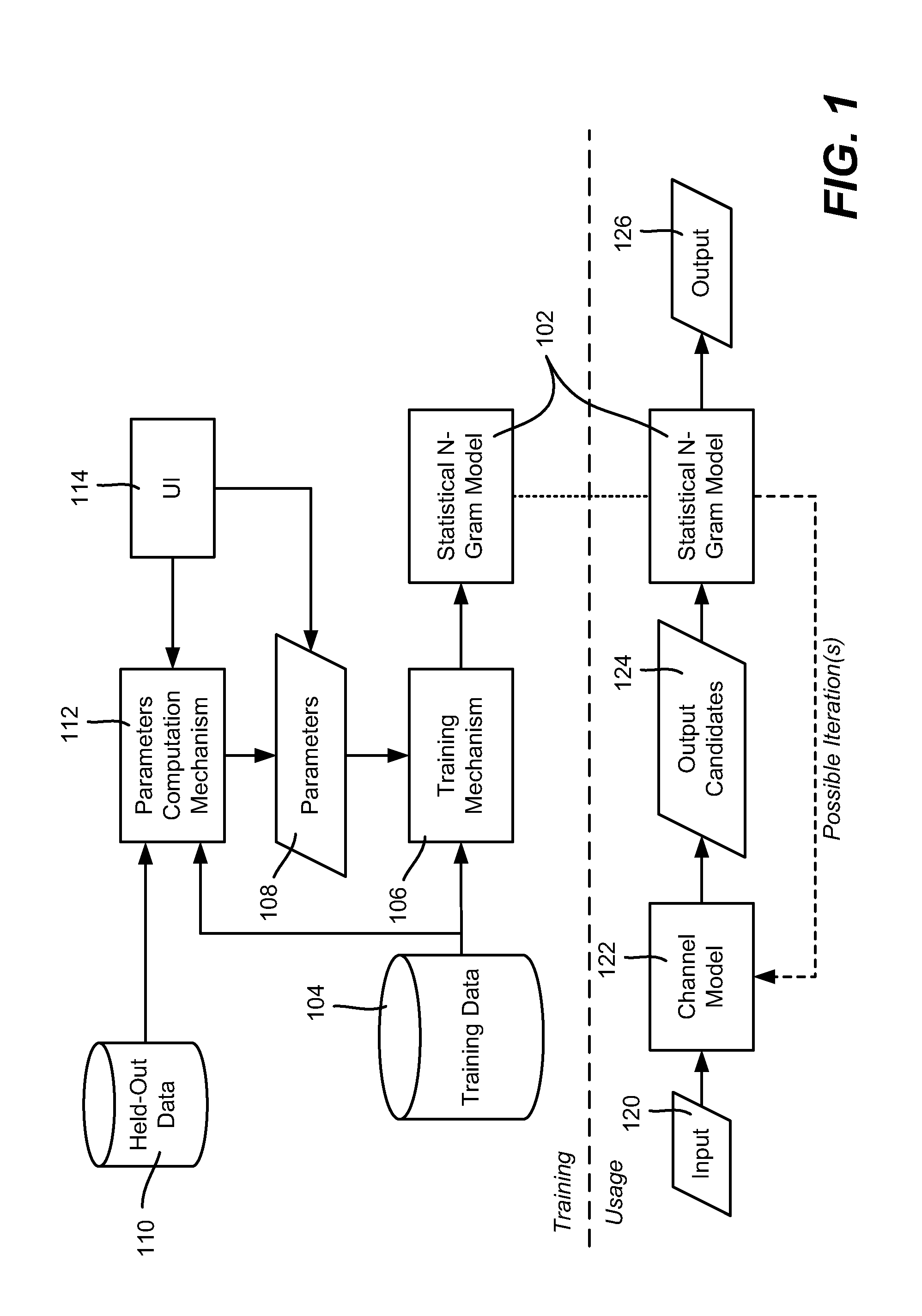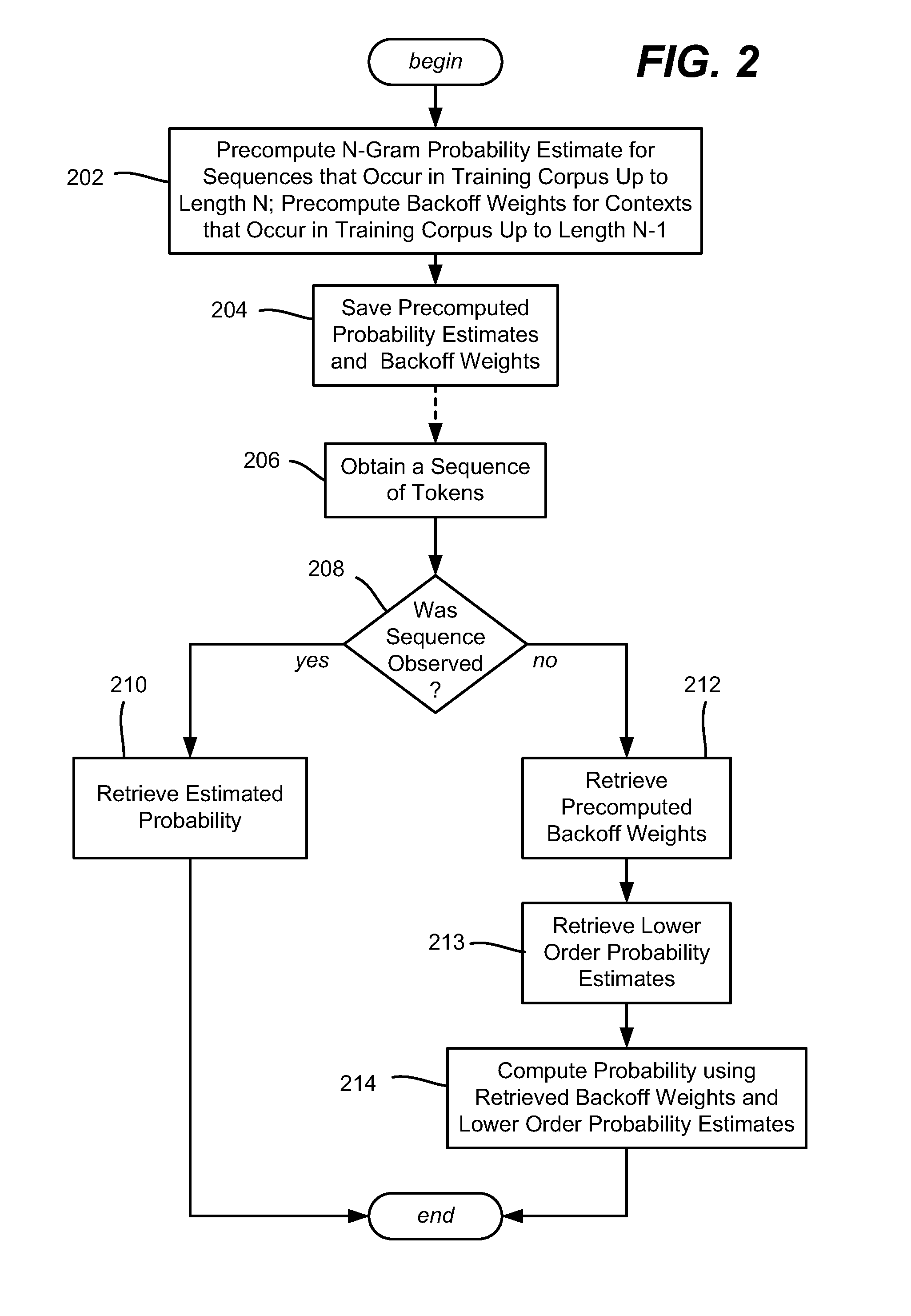N-Gram Model Smoothing with Independently Controllable Parameters
a smoothing and independent control technology, applied in the field of ngram models, can solve the problems of poor work efficiency, inconvenient or inconvenient kneser-ney smoothing, and low-order models providing very poor estimates of the probabilities of n-grams that actually have been observed in the training corpus
- Summary
- Abstract
- Description
- Claims
- Application Information
AI Technical Summary
Benefits of technology
Problems solved by technology
Method used
Image
Examples
Embodiment Construction
Various aspects of the technology described herein are generally directed towards estimating the probability of a token (word, character, symbol or the like) based upon the context of the previous n−1 tokens in a sequence of tokens. A training corpus is processed to obtain standard counts and then provide an N-gram model, which is smoothed, and accessed to determine the estimate. However, unlike prior smoothing technologies, discount and interpolation parameters are independently set as described below, which provides a high-quality N-gram model that uses standard counts in lower-order models as well as the highest order model. The technology may be used in statistical language models.
While words in a language model / training corpus are used as examples of the N-grams herein, it is understood that a token may be any grouping of one or more pieces of data, and that any of the examples described herein are non-limiting examples. As such, the present invention is not limited to any part...
PUM
 Login to View More
Login to View More Abstract
Description
Claims
Application Information
 Login to View More
Login to View More - R&D
- Intellectual Property
- Life Sciences
- Materials
- Tech Scout
- Unparalleled Data Quality
- Higher Quality Content
- 60% Fewer Hallucinations
Browse by: Latest US Patents, China's latest patents, Technical Efficacy Thesaurus, Application Domain, Technology Topic, Popular Technical Reports.
© 2025 PatSnap. All rights reserved.Legal|Privacy policy|Modern Slavery Act Transparency Statement|Sitemap|About US| Contact US: help@patsnap.com



